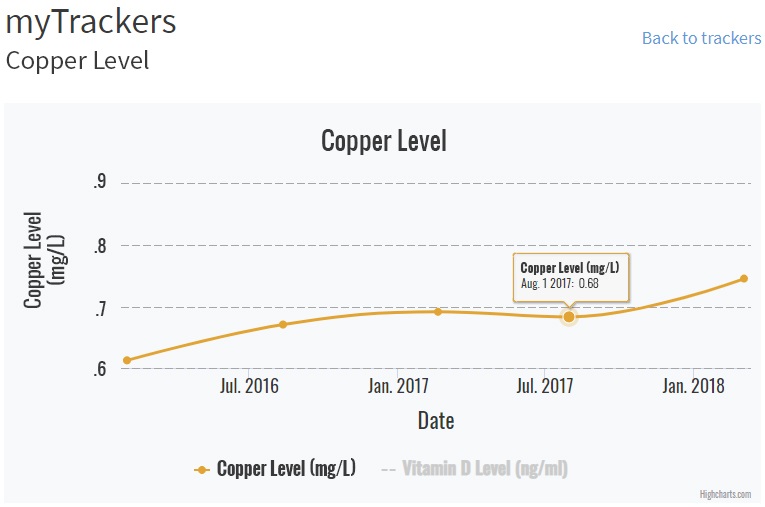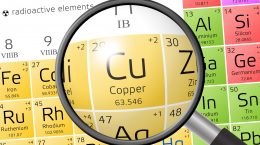Published on February 15, 2019
D*action Magnesium + Safety is a new project from GrassrootsHealth to provide you with information about your nutrient status for many essential elements and toxins. In previous blogs we discussed what magnesium is, why it’s important for health, and how magnesium status is assessed. We also previously discussed selenium and zinc, the second and third elements in the testing panel. Today we will talk about the health benefits of copper, the fourth essential element in this testing panel.
What is copper and what does it do in the body?

Copper is an essential mineral for the body that is found in a wide variety of foods including oysters and other shellfish, liver, beans, nuts, whole grains, potatoes, dark leafy greens, dried fruits, black pepper, yeast, and cocoa. Copper is present in all body tissues and an essential enzyme co-factor. It helps keep bones, skin, nerves, and the immune system healthy and working properly. Copper is essential for the formation of collagen, a main component of connective tissue, and is therefore needed for heart and blood vessel function, skin integrity, wound healing, and bone strength. It is also necessary for iron absorption, conversion to its useable form, and transport around the body.
Can I consume too little or too much copper?
Yes! The National Academy of Medicine recommends 900 micrograms (mcg) per day for adults (1000 mcg/day is recommended for pregnant women and 1300 mcg/day is recommended for mothers who are breastfeeding). Copper deficiency is rare but can lead to anemia (due to iron’s dependence on copper for absorption), neurological dysfunction, osteoporosis, and connective tissue abnormalities. Those with a poor diet or with digestive disorders that limit absorption are at a higher risk for deficiency. Too much zinc in the diet can also lead to a copper deficiency. While a small amount of copper is essential to the body, toxicity can happen when excess intake occurs. Symptoms of copper toxicity include liver and kidney dysfunction.
How is copper measured in the body?
Copper nutritional status can be assessed with a dried blood spot test. This test measures the amount of copper within the red blood cells as well as within the serum, and for this reason, can be more accurate and detect deficiencies earlier than a typical copper test of the serum alone. The lab reference range for copper is 0.64 to 0.96 milligrams per liter (mg/L), which is the range of the average population the lab serves.

Additionally, this blood spot test provides the ratio of zinc to copper (Zn:Cu). Since too much zinc can inhibit the absorption of copper and lead to deficiency, it is important to know the ratio between these two essential elements. The lab reference range for the ratio of zinc to copper (Zn:Cu) is 6.6 to 10.8.

Order your D*action Magnesium + Safety test TODAY! — includes Copper test
How can I track my copper intake and level?
To help you track your nutrient levels, GrassrootsHealth has created an online tracking system called myData-myAnswers. For each nutrient you can track your intake and nutrient levels over time. This will help you know how your nutrient status impacts your health. Check it out today!
NEW Magnesium Plus Elements Blood Spot Test, to test Magnesium (RBC test), other elements and heavy metals and vitamin D!
The D*action Magnesium + Safety Project will provide information about the following
Essential Elements
Magnesium
Selenium
Zinc
Copper
Heavy Metals, which can be unsafe for you
Cadmium
Lead
Mercury
and Vitamin D
Join the D*action Magnesium + Safety Project TODAY!
Take Charge of YOUR Health.








